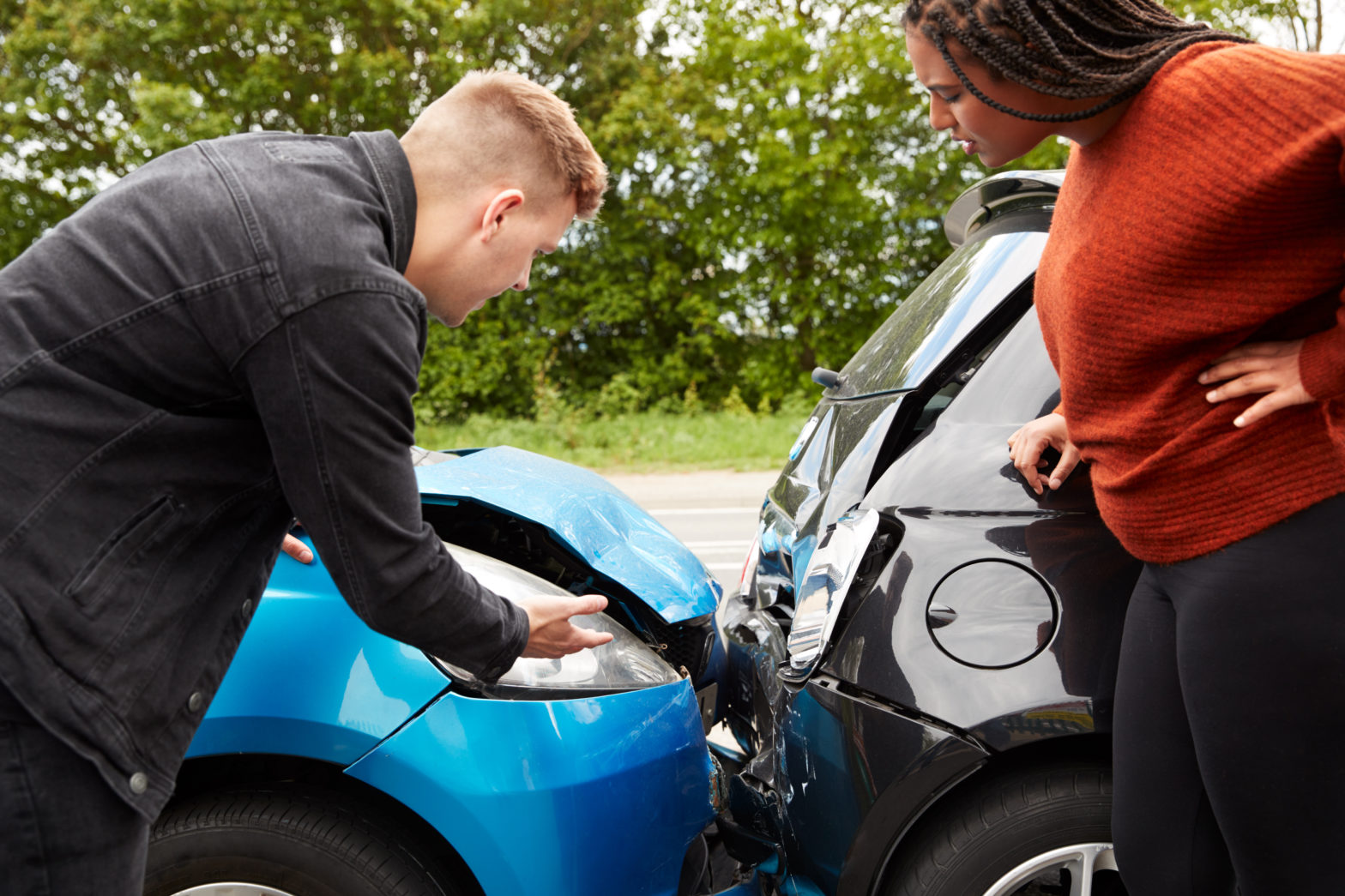
When vehicle accidents occur, it is important to determine who is liable for the car accident. Liability factors heavily into the process of filing insurance claims. It must be determined who caused the accident, and who is responsible for the damages. Sometimes it is easy to determine who caused the accident. However, sometimes the blame is unclear, or multiple individuals could be at fault.
Our Daytona Beach car accident lawyers can help identify liability if you have been in an auto accident. After your free consultation, our team will take over dealing with insurance, police reports and the other party. We will fight to make sure you are compensated for your injuries and damages.
Liability is an accident can often be determined by the type of accident. Here are the most common types of accidents in Daytona Beach.
Rear End Collisions
Rear end collisions are extremely common. In most cases, the driver of the following car is found to be at fault. Common accident causes include not paying attention while driving or following vehicles too closely.
Traffic laws state that enough space needs to be maintained between vehicles when driving. In most cases, the following vehicle is primarily responsible for maintaining a safe distance from the vehicle in front. Of course, there are exceptions to this rule, and sometimes both drivers are found to be at fault for a rear end collision. In some cases, a third-party may also share some of the blame.
One example of third-party blame would be if a vehicle were found to have faulty turn signals. It may be initially assumed that the driver did not activate his or her turn signals, thus causing the accident. However, if it turns out the turn signal was defective, liability might be shared by the vehicle’s manufacturer, or the last person to repair the signals.
Vehicles that fail to yield the right-of-way to other vehicles can also sometimes share the blame for accidents. If a vehicle pulls in front of you suddenly, you might hit them. You will be likely be found liable for the accident, especially if you were not paying attention. But the driver that pulled out in front of you suddenly did not yield to your right-of-way and may be also found to be at fault.
Left Turn Accidents
Left turn accidents are also quite common. In most cases, it is easy to determine fault. The vehicle turning left has the responsibility to yield to vehicle going straight, unless they have a green arrow turn signal.
It is often determined that the driver turning left made the error that caused the accident. Sometimes the fault may be turning while their view was obstructed. It may also be determined that they misjudged vehicle speeds, or the gap between vehicles. The left turning driver may also be determined to have misinterpreted the intentions of the other driver.
Although the left turning driver is usually found to be at fault, this is not always the case. The driver going straight might be found to be at least partially at fault. For example, the straight moving driver may have been exceeding the speed limit as they traveled through the intersection. Also, if the traffic signals indicated that the left turning driver had the right-of-way, the person driving straight could be determined to be at fault.
Head-On Collisions
Head-on collisions are among the deadliest of traffic accidents, especially at high speeds. These accidents occur when two vehicles traveling in opposite directions hit each other head on. In 2017, this type of accident was determined to have caused 56 percent of traffic accident deaths.
There can be many causes for a head-on collision. One vehicle may have strayed from its designated lane, causing it to collide with oncoming traffic. Sometimes a driver may turn the wrong way onto a one-way street. A driver may become confused on freeway exits or on-ramps, and wind up going the wrong direction. In these cases, the driver that ends up in the wrong lane would be found at fault.
However, vehicles also sometimes end up in the wrong lane due to another previous accident, such as hitting something and then veering or rolling into the opposing lane. Generally, the driver that was in the wrong lane is found to be at fault. But there are exceptions to this rule. If a previous accident caused the vehicle to deviate into the wrong lane, the driver that caused the preceding accident may be found to be at least partially liable.
Another scenario could involve a rear end collision accident that ultimately pushes the front vehicle into oncoming traffic. In this case, the driver that caused the first accident would be found to be at fault.
Side Impact Collisions
Side impact collisions are commonly referred to as “T-bone” accidents. These accidents occur when one vehicle impacts another at an approximate 90-degree angle. Passengers or the driver sitting on the side of the vehicle impacted are often very severely injured in these accidents. The sides of vehicles are often vulnerable to extensive damage upon impact since the vehicle’s steel frame is not present for protection.
Side impact collisions very commonly occur in an intersection. As a rule, one driver is usually found to have failed to yield the right-of-way. Distracted driving is a common cause, as is running a traffic signal. Driving under the influence of alcohol or drugs is another common cause of side impact accidents.
The driver that did not properly yield to the right-of-way is usually found to be at fault. Of course, there can also be other factors to consider. If a drunk driver fails to yield to the right-of-way in an intersection and side impacts another vehicle, the drunk driver will be found at fault. However, the establishment that served the driver alcohol may also be found to be partially at fault if the person was already visibly intoxicated when served.
Sideswipe Accidents
Sideswipe accidents occur between vehicles that are moving in the same direction. If the accident occurs on a side street at a slow rate of speed, the damage may not be too great. However, when sideswipe accidents occur on the freeway at high speeds, they can be quite dangerous and even deadly.
Liability in these accidents is generally determined by who had the right-of-way. The behavior of the drivers leading up to the accident also factors into determining liability.
Changing lanes is a common cause of these accidents. For example, a driver on the freeway may change lanes abruptly to avoid missing an exit. If he or she fails to check mirrors properly, a sideswipe accident can occur.
Bad weather can also factor into sideswipe accidents. Rain can cause hydroplaning, while snow and ice can cause traction issues. Failure to maintain a safe rate of speed in poor driving conditions can be the cause. The driver who failed to control his or her vehicle is found to be at fault in these situations.
Freeway lane changes to pass other vehicles, or to allow other vehicles to pass, can also cause sideswipes to occur. In these cases, sometimes more than one driver is found to be at fault. Basic traffic laws state that lane changes are only permitted when the driver can determine it is safe. If both drivers did not assess the safety properly and changed lanes at the same time, both could be found at fault.
Single Vehicle Accidents
Not every accident involves more than one vehicle. Additionally, not every accident involving more than one vehicle results in more than one vehicle becoming damaged. These accidents are the cause of a large percentage of traffic deaths annually.
It is often assumed that the vehicle driver is always at fault when a single vehicle accident occurs. While this is often true, there are exceptions to the rule. Sometimes it is determined that single vehicle accidents are caused by others, through neglect or through other actions.
For example, a vehicle could pull out in front of another vehicle abruptly. The vehicles do not collide, but the first driver might veer into another lane or off the side of the road to avoid a collision. The result could be a single vehicle collision with a utility pole or tree. In this case, the driver that pulled out abruptly would be found at least partially liable.
Mechanical vehicle failure can also be the cause of single vehicle accidents. If a car’s brakes malfunction, for example, the vehicle manufacturer may be found at fault. Or, if the driver had brake work performed on the vehicle recently, the service provider could be found at fault.
Talk to an Experienced Car Accident Attorney
There are many ways that individuals or entities can be found liable for traffic accidents. When Daytona Beach car accidents occur, an experienced car accident attorney should be consulted. An attorney with car accident experience can identify all parties who could be fully or partially liable for the accident. This is invaluable when attempting to recover damages caused by accidents. If you have a personal injury claim, establishing negligence is key to a good outcome.
Proving negligence involves determining the at-fault party, and whether that person breached their duty of care for you as a fellow driver. Contacting a lawyer who has experience with serious car accidents will help you understand and take advantage of your legal options, such as filing a lawsuit.
Have you been injured in an accident or fall? Do You have question and want to know your legal options. Call 386-255-6400 for a free consultation and remember there is NO FEE unless WE Win.
